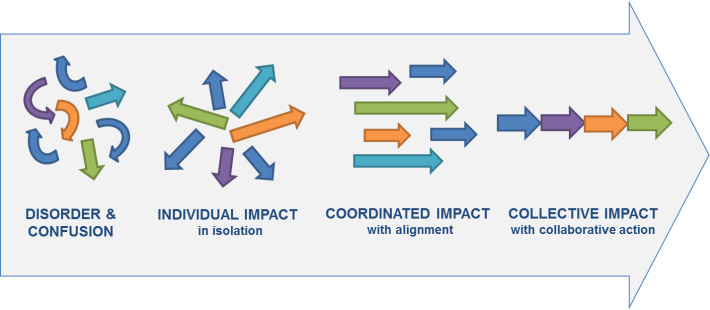Collective Impact & Community Data

“Together for Beaufort...began as an effort by the leadership of the public, private and nonprofit sectors in Beaufort County to bring our community together around clear and compelling goals that can unify us as a people.” Matt Petrofes [Director, Region 8, SCDHEC], Chair, Leadership Council, Beaufort County Alliance for Human Services, 2006 “Baseline” Report
The Human Services Department is committed to continuing the work started by the Human Services Alliance and the Together for Beaufort County (T4BC) initiative in the following ways: by fostering cross-sector collaboration, engaging community stakeholders in strategic planning, and coordinating data-informed coalitions to address community needs. We continue to partner with organizations such as United Way of the Lowcountry, local governments, healthcare systems, education institutions, faith communities, and nonprofit agencies to build a unified, equitable human services network. Our department actively participates in and supports community-wide strategic initiatives to improve quality of life for all Beaufort County residents, carrying forward the spirit of shared responsibility that defined Together for Beaufort County.
This commitment reflects our department’s embrace of a collective impact framework—a structured, collaborative approach to addressing complex social issues that no single organization can solve alone. Unlike traditional partnerships that often operate in silos, collective impact aligns diverse stakeholders around a common agenda, with shared measurement systems, mutually reinforcing activities, continuous communication, and strong backbone support to drive coordinated progress. Through this model, we intentionally bring together government agencies, nonprofits, education and health systems, faith-based groups, businesses, and community members to achieve lasting, systemic change. The Human Services Department is proud to partner with United Way of the Lowcountry and other community leaders to advance this approach and ensure that our collective efforts translate into meaningful improvements in the lives of Beaufort County residents.

Community indicators are critical tools for assessing the health, well-being, and progress of a community. By regularly monitoring and analyzing these indicators, communities can foster sustainable development, enhance well-being, and ensure that they are moving towards a more prosperous and equitable future.
The Beaufort County Human Services Department, in collaboration with the Together for Beaufort County initiative and research partners such as the College of Charleston and the University of South Carolina, has contributed to the publication of several community indicator reports.
- 2024 Early Childhood Report
- 2021 Community Indicator Report
- 2018 Community Indicator Report
- 2012 Community Indicator Report
- 2009 Interim Report
- 2006 Baseline Report